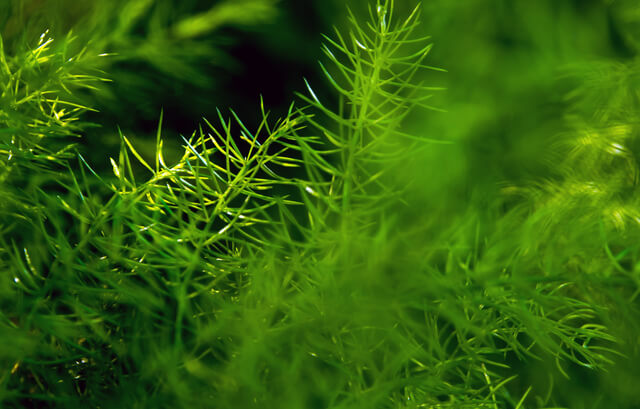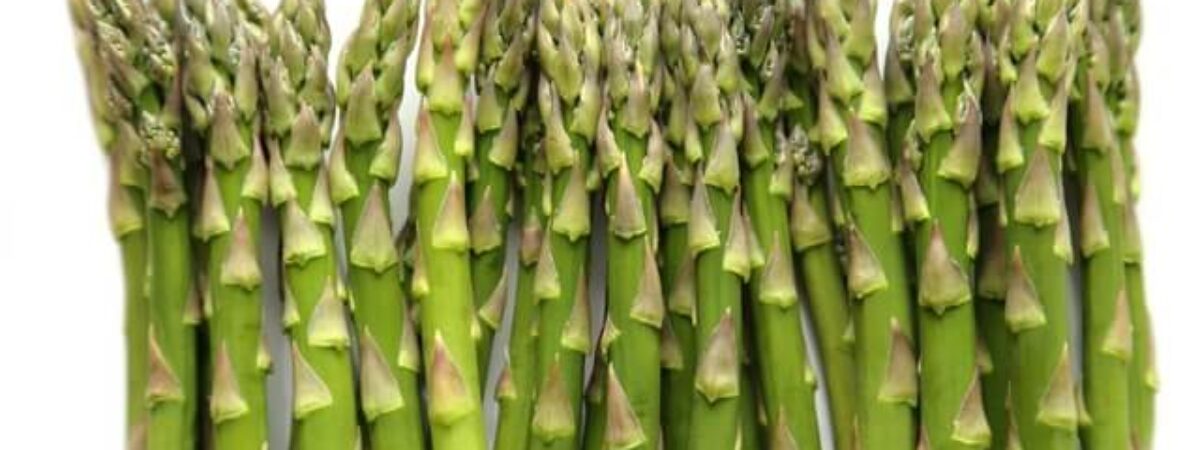Asparagus Officinalis is a perennial vegetable and among the first plants to be welcomed in the Spring. Commonly known as Asparagus and being a perennial plant, the sensitive spears of these come every year once it is rooted.
Asparagus is native to Europe and Africa. These plants can be grown in USDA Hardiness zones of 4-9. They belong to the family of Asparagaceae
Asparagus plants require three to five years to fully fill out and flourish, but the patience is well worthwhile. Once they get into their swing, you’ll be picking asparagus spears for more than a month every spring.
The plant’s juvenile, upright stems with scale-like tips are known as asparagus spears. Later in the season, the leaf transforms into an airy, light-green fern-like cloud before turning golden in the autumn. The ideal time to seed this perennial from its roots, or crowns, is in early spring.
The ferny leaves are lovely as a decoration. This is one of those vegetables that, despite how green it appears in the shop, will never match the exquisite flavor of freshly harvested spears from the yard. When it refers to fresh, crisp, exquisite flavor, farmed asparagus is incomparable.
What’s more, the nicest part of it all is that It is not only simple to cultivate and manage, but one sowing of the crowns can produce for up to 20 years. That’s a significant return on investment for a small gardening attempt.
Here’s a guide on how to begin reaping the benefits of growing your own asparagus by planting, growing, and maintaining your own asparagus beds.

Difference between Green and White Asparagus plant
White asparagus seems to be the same species as green ones, but this is blanched to make it white.
Blanching prevents the plant of light, preventing it from photosynthesizing. The developing spears are covered with dirt or plastic chambers to achieve this.
If the collected spears are quickly refrigerated to avoid fiber formation, the finished result is smooth, white, and almost fiber-free.
Since asparagus is a perennial crop that will thrive in the same spot for several seasons, choosing the right growing spot is crucial to its long-term success. Click To TweetPlanting and Growing Guide
Since asparagus is a perennial crop that will thrive in the same spot for several seasons, choosing the right growing spot is crucial to its long-term success.
The plant must first and primarily be grown with the sunlight in consideration. Choose a location that receives at least 8 hours of direct sunlight per day. Even though asparagus can withstand little shade, it prefers full sun.
You’ll have to find an area in the vegetable garden that is out of the path and free of competitive crops. Asparagus, on the other hand, requires a lot of room.
They should be spaced 12 to 18 inches away. They won’t spread significantly in the first few years, but once set, they’ll easily fill in.
While sowing, the total soil condition must be examined in addition to enough sunshine. Asparagus thrives in soil that is nutritious, porous, and well-draining.
Keep in mind that the crop may be grown in the same location for up to 20 years or more. With this in view, it’s critical to start by supplying the soil with nutrients.
The easiest method to do this is to work big volumes of compost into the soil prior to sowing. Compost reigns supreme when it comes to improving soil richness and structure.
It not only offers nutrients to the soil, but it also enhances soil structure while increasing drainage.Heirloom cultivars require additional room since they contain both male and female plants, which means they will generate seeds and self-sow.

Recent hybrid types are engineered to generate solely male plants that do not release seeds, requiring less area because they will only expand through the current crown.
Asparagus can indeed be started from seed or cultivated from crowns. Cultivating asparagus using crowns is the significantly easier and generally more effective alternative for establishing a garden plant. It also means that the production will be much earlier.
Crops can be planted from seed 4 weeks after the last frost is forecast. Seeds, on the other hand, will lengthen the wait through several years.
The plants crowns’ roots, apart from those of many other plants, can endure some air contact, therefore they’re frequently sold loose. They must appear solid and healthy, rather than wilted or soggy.
Planting crowns in a trench is perhaps the most popular method. Dig a trench 12 inches deep and 12 inches broad in the spring. Make heaps out of your compost, fertilizer, or other organic stuff, about 18 inches apart.
Extend the roots along the edges of the crown and place it on top of the pile. The crown should be about 6 inches underneath the soil level at its highest point. Fill the crown with soil and give it plenty of water.
Asparagus crowns are the roots of asparagus plants that are 1 to 2 years old. Due to their matured state of growth, they generate an edible harvest considerably faster than seed. Click To TweetAsparagus crowns are the roots of asparagus plants that are 1 to 2 years old. Due to their matured state of growth, they generate an edible harvest considerably faster than seed.
Seed crops are challenging to maintain weed-free in the formative days due to their modest, early growth.
And nothing has a greater influence on a crop’s productivity than competitive weeds! Asparagus seeds are difficult to sprout and can be misinterpreted for weeds while caring for the beds.
Once planting, asparagus crowns might yield an edible harvest the subsequent year. However, when starting from seed, any form of significant yield can take up to 3 years.

Choosing the ideal Asparagus Plants
Asparagus plants come in two varieties: male and female. Whenever it comes to raising in the yard, male types are typically chosen.Male plants keep growing and produce more spears than female plants.
These are not only prolific providers, but they also have a great flavor. There’s no denying that purple asparagus is a total buzz word when it’s served at the dinner table.
Caring Guide
Soil
It’s worth taking the effort to enhance the soil prior planting a lengthy perennial like asparagus. Make sure there’s plenty of organic matter in the soil and that the pH is between 6.5 and 7.0.
Prior to actually planting, remove any weeds and big stones from the site. So that the plants do not remain damp, the soil should drain efficiently.
Light
Full sun is ideal for the plants. The plant will produce thin spears and fragile plants that are susceptible to difficulties if they don’t get enough everyday sunlight.
Water
Hydrate the plant often, specifically when it’s new; provide it 1 to 2 inches of water per week for the first two growing seasons, and 1 inch per week for mature plants.
There will be less troubles in future years if they have been given a strong start when initially planting. Consider putting drip irrigation in the asparagus bed.
Temperature and Humidity
During the planting season, the optimum temperature for asparagus is 70 to 85 degrees Fahrenheit during the day and 60 to 70 degrees Fahrenheit at night.
In the spring, it will begin to produce shoots when the soil temperature is higher than 50 degrees. Any freeze after the shoots start to develop will discolor them. Temperatures over 85 degrees Fahrenheit or under 55 degrees Fahrenheit may cause sluggish growth.
Fertilizing
Organic material and an all-purpose organic fertilizer, as well as rock phosphate, a natural mineral powder that encourages root formation, should be added to the hole when creating the asparagus bed.
These nutrients will aid in the development of a healthy root system in the asparagus. Top coat the soil with manure once a year to keep it fertile and to nourish the asparagus plants.
One can do this in the early spring before the sprouts emerge, or after the leaves have probably died and been trimmed to the soil in the autumn. Because it is a heavy feeder, you should fertilize it in mid-spring, when it is growing strongly.
Harvesting
The spears should not be harvested in the first or subsequent year, but decaying leaves should be chopped off in late autumn and side-dressed with manure.
Side-dress with manure in the spring and early autumn of the following year, and chop off dead ferns in the autumn. Maintain a dense mulch layer in the bed.
The bed should be in full operation by the third year, so that you can begin harvesting asparagus occasionally throughout the period.
Harvesting should be avoided throughout the first couple of years. Blooming season may continue for 2 to 3 weeks if you have seedlings. Mature plants, on the other hand, can yield for up to 8 weeks.
Every other day, inspect your plant for spears that are ready to harvest. Spears grow quickly, and before you realize it, they’ll be too woody to use. When an asparagus spear begins to expand and develop foliage, it is no longer edible.
Collect spears once they attain a length of 8 to 10 inches and a thickness of 1/2 to 3/4 inch.
Basically cut the stalks at the soil surface with a sharp knife or scissors to pick asparagus.
When the thickness of the spears has shrunk to the thickness of a pencil, discontinue picking them.
Nourish your asparagus in the early summer after it has been harvested. One can apply a balanced organic fertilizer on top of the decomposing mulch, or distribute additional inches of rich, weed-free manure on top.
Conclusion
The asparagus fields will give you seasons of insanely delicious harvests once they are planted.Here is the guide that will help you for cultivating your own tasty asparagus produce this year.
Much better, you will definitely be able to reap the benefits of the labor for many upcoming years.
You may also like to read
Oyster Plants- Best Guide to Grow and Care
How to Grow and Care for Peace Lily Indoors- A Complete Guide






